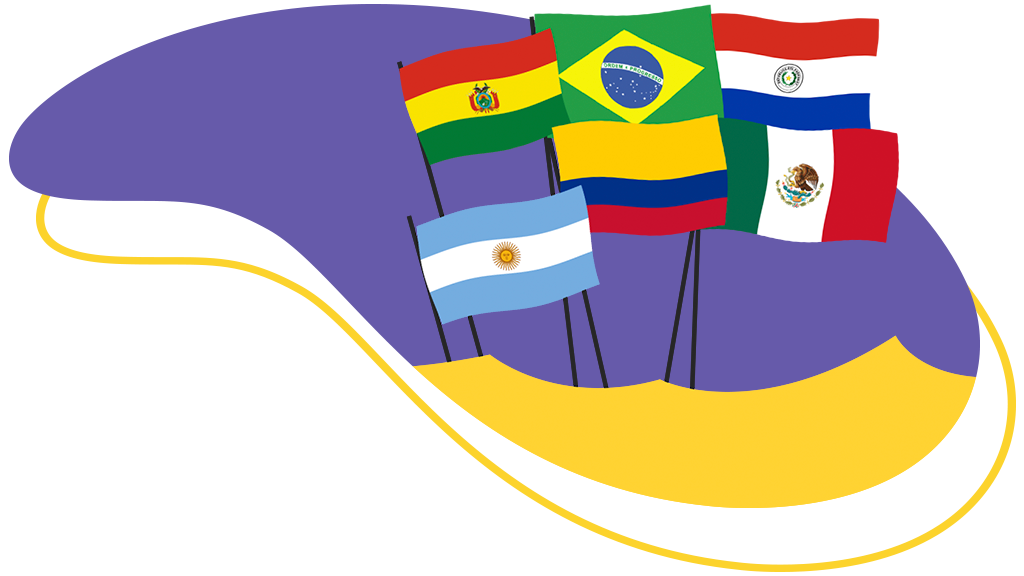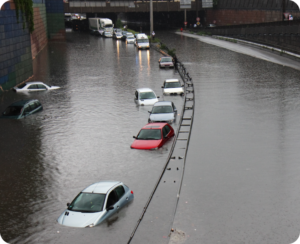In early September of this year, Hurricane Ida brought the heaviest rain in 152 years, which caused impressive flooding in New York. Blocked roads, subway stations flooded by water, millions of dollars in damages and priceless lives lost made up some of the tragic impact left by the storm.
Hurricane Ida, a powerful Category 4 storm, also hit the Louisiana coast with winds of 240 km/h. As it moved north, it left a trail of destruction with dozens dead and tens of thousands of homes severely damaged. When it hit the Northeast on Sept. 1, it would become the deadliest storm the region has faced since Hurricane Sandy in 2012.
The flooding began in the late afternoon and continued until after midnight. New rainfall records had been set days earlier by a tropical storm, only to be broken again when Ida arrived.
Most of the victims in New York were Asian and Hispanic immigrants who lived in illegal basements. These tragedies shed a light on the vulnerability of low-income communities and the deepening social inequalities that exist.
Without a more equitable approach to intervention, the problem will only get worse.
Flooding around the world and forecasts
Scholars predict that flooding will be the environmental calamity that will most affect the majority of the global population amidst the climate crisis.
Today, about 1.5 billion people – about one in five people worldwide – face at least moderate flood risk, according to the World Bank.
Nearly 90% of the world’s flood-exposed people live in low- and middle-income countries in the southern hemisphere, but rich countries are not immune, with nearly 160 million living in the developed world also vulnerable to flooding.
In July 2021, we also saw countries in Europe under water, and many of its citizens were taken by surprise. The damage was massive; people died and not only houses, but entire streets disappeared under the floods. Local authorities have already begun to express the need to speed up climate protection measures.
In the coming decades, Europe, North America and other parts of the northern hemisphere will see new areas prone to flooding – and in those places, too, the poorest will be hardest hit.
In the US, around 41 million people are at risk of flooding, particularly in metropolitan areas where population density is high and many developments are on land prone to flooding.
Vulnerability of Immigrants in NY
As in several European and Brazilian cities, a housing crisis in the major cities of the United States forced low-income people to live in housing below the minimum height for flood safety, in poor conditions and without any evacuation plans.
Due to issues such as documentation and limited financial opportunities, many rely on informal networks within their communities to find housing, and what appears often is illegal conversions built without the proper permits.
There are about 50,000 illegal basements in New York City, according to the city’s estimate. Despite the dangers, tenants and landlords avoid reporting any problems due to fear of eviction or fines.
Five of the six properties where New Yorkers lost their lives during the floods were unlicensed homes on the basement level. Three victims were from the same family and shared a basement with two other families, with only one door and not even a window, making it impossible for them to escape their homes before the flood blocked the only available exit. The other two families were not at home during the heavy rain.
Lack of quality housing is an obvious reason why the poorest people are most at risk during an extreme weather event. An important factor to note is that low-income communities tend to be in places with fewer trees and less green in general.
During heat waves, concrete surfaces trap high temperatures and during flooding, they prevent water runoff. Most of the flood deaths in NY were residents in areas close to large impermeable surfaces such as highways and parking lots.
In all, Hurricane Ida hit nearly 4000 km of the continental United States over three days, generating tornadoes in at least seven states, record rainfall nationwide and triggering the first flash flood emergency in New York City.
Challenges within the poorest communities
Floods can threaten several countries and do not choose among the poorest or richest neighborhoods. Everyone is at risk. However, low-income and marginalized communities can take up to twice as long to recover from a disaster since they are less likely to have the resources to rebuild or relocate, which keeps people vulnerable.
A 2019 UN report noted that when Hurricane Sandy left large areas of New York City in the dark in 2012, the headquarters of the investment bank, Goldman Sachs, in Lower Manhattan was protected by a massive wall of sandbags. And do you remember when private firefighters were hired to save mansions from wildfires in California?
The report estimates that climate change could push more than 120 million people into poverty by 2030, undoing 50 years of progress in poverty reduction.
The effects will not only threaten basic human rights such as life, food, housing and water, but also the rule of law and democracy.
Immigrants, whether documented or not, are often even more vulnerable than our racial and ethnic minorities who are US citizens, because they are more afraid to ask for help.
You can’t be too careful.
Despite knowing the value that each one of us places on our homes, with all the assets gained with our blood, sweat, and tears, let’s be realistic. What matters most is your life and the safety of your family. You just can’t be too careful.
Ideally, we would all choose the safest and best possible place to live. However, we understand that it is not always so simple, and especially as an immigrant, we often need to make sacrifices. We recommend that you atleast research which Flood Zone your property or the property you want to rent is located.
As we know, not all flood zones are mapped (can you guess if they are in poorer regions) Still, even many that are mapped are already out of date. For your convenience, we’ve put together a handy list of questions you can ask when looking for a new house.
When renting a house, there are a few things that can be done to reduce damage if you are hit by a flood:
- Place furniture and electronics in the tallest parts of the house
- Swap carpets for tile floors or something that won’t be damaged by water
- Install backflow valves in the sewer pipe
- Direct the gutters so that they divert rainwater away from the walls of the property.
Get Flood Insurance
Considering the possibility of your home being flooded in the future, it is important to ensure your financial security and the security of your home. Flooding can cause very costly damages for residents and it is the reason that people with lower incomes cannot recover.
Flood insurance can be a critical investment at these times. After the trauma of seeing your home destroyed by water, knowing you will have the resources to start over can be the difference between continuing your dream of living and thriving in the US or not.
The Federal Government, aware of the magnitude of possible damage caused by flooding, created the NFIP, which is responsible for providing affordable insurance to the entire population. You can also choose a private company for more personalized insurance. Breezy Seguros can help you choose between the two options and find the best rates and terms for you.
In fact, we’ve already written a guide to Flood Insurance in New Jersey and Massachusetts here on the blog.
Above all, we want our community to prosper and do well, even in the face of these challenges.
Be safe.
** This story was inspired by the BBC’s The Flood That Drowned American Dreams.








